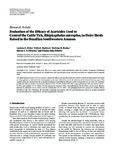Por favor, use este identificador para citar o enlazar este ítem:
http://www.alice.cnptia.embrapa.br/alice/handle/doc/890936Registro completo de metadatos
| Campo DC | Valor | Lengua/Idioma |
|---|---|---|
| dc.contributor.author | BRITO, L. G. | pt_BR |
| dc.contributor.author | BARBIERI, F. da S. | pt_BR |
| dc.contributor.author | ROCHA, R. B. | pt_BR |
| dc.contributor.author | OLIVEIRA, M. C. de S. | pt_BR |
| dc.contributor.author | RIBEIRO, E. S. | pt_BR |
| dc.date.accessioned | 2011-06-08T11:11:11Z | pt_BR |
| dc.date.available | 2011-06-08T11:11:11Z | pt_BR |
| dc.date.created | 2011-06-08 | pt_BR |
| dc.date.issued | 2011 | pt_BR |
| dc.identifier.citation | Veterinary Medicine International, apr. 2011, 806093. | pt_BR |
| dc.identifier.issn | 2042-0048 | eng |
| dc.identifier.uri | http://www.alice.cnptia.embrapa.br/alice/handle/doc/890936 | pt_BR |
| dc.description | The adult immersion test (AIT) was used to evaluate the efficacy of acaricide molecules used for control of Rhipicephalus microplus on 106 populations collected in five municipalities in the state of Rondônia in the Brazilian South Occidental Amazon region. The analysis of the data showed that the acaricide formulations had different efficacies on the tick populations surveyed. The synthetic pyrethroids (SPs) acaricides were the least effective (48.35?76.84%), followed by SP + organophosphate (OP) associations (68.91?81.47%) and amidine (51.35?100%). For the macrocyclic lactones (MLs), the milbemycin (94.84?100%) was the most effective, followed by spinosad (93.21?100%) and the avermectins (81.34?100%). The phenylpyrazole (PZ) group had similar efficacy (99.90%) to the MLs. Therefore, SP acaricides, including associations with OP, and formulations based on amidine presented low in vitro efficacy to control the R. microplus populations surveyed. | eng |
| dc.language.iso | eng | pt_BR |
| dc.rights | openAccess | eng |
| dc.subject | Cattle tick | pt_BR |
| dc.subject | Control | pt_BR |
| dc.subject | Acarides | pt_BR |
| dc.title | Evaluation of the efficacy of acaricides used to control the cattle tick, Rhipicephalus microplus, in dairy herds raised in the Brasilian Southwestern Amazon. | pt_BR |
| dc.type | Artigo de periódico | pt_BR |
| dc.date.updated | 2012-03-30T11:11:11Z | pt_BR |
| dc.format.extent2 | 6 p. | eng |
| riaa.ainfo.id | 890936 | pt_BR |
| riaa.ainfo.lastupdate | 2012-03-30 | pt_BR |
| dc.identifier.doi | 10.4061/2011/806093 | eng |
| dc.contributor.institution | LUCIANA GATTO BRITO, CPAF-RO; FABIO DA SILVA BARBIERI, CPAF-RO; RODRIGO BARROS ROCHA, CPAF-RO; MARCIA CRISTINA DE SENA OLIVEIRA, CPPSE; ELISANA SALES RIBEIRO, CPAF-RO. | pt_BR |
| Aparece en las colecciones: | Artigo em periódico indexado (CPPSE)  | |
Ficheros en este ítem:
| Fichero | Descripción | Tamaño | Formato | |
|---|---|---|---|---|
| PROCI2011.00028.pdf | 675.93 kB | Adobe PDF |  Visualizar/Abrir |









